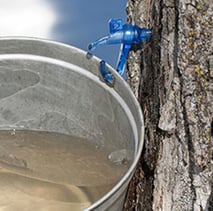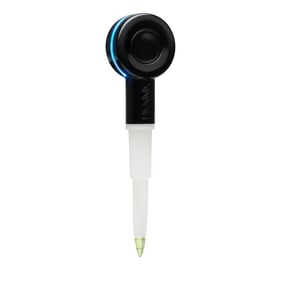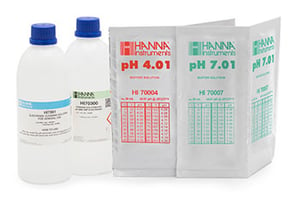
Maple syrup is a sweetener used in, and on, everything from pancakes to granola bars, and more. Getting maple syrup from the tree to your plate is not as simple as extracting it from a tree and bottling it. There are multiple steps in order to get that golden syrup, and each step has critical testing points. pH is a great benchmark not just for the syrup, but for the reverse osmosis process.
Maple Syrup

Maple syrup is usually made from the xylem sap of various maple trees, such as red maple trees or black maple trees. The maple syrup is made from the sap that is displayed from the trees that are usually stored as starch in their trunks and roots so that the starch can be converted to sugar. Sap is a dilute solution that is primarily water, usually 98% with 2% sugar. However, we want the sugar percentage to increase to produce maple syrup.

To obtain a higher sugar content the sap will have to be purified either by evaporation (boiling) or reverse osmosis (RO) for separation. The pH of syrup is related to several factors including collection, storage, methods used to process the sap, time of season and contamination. pH is used in a variety of ways to control the acidity or alkalinity of a solution by using a logarithmic scale were 7 is neutral. With fresh maple sap, the normal range for pH is 3.9 to 7.9 according to the seasons and conditions. However, in most cases the sap is slightly acidic with a typical range of 6.5-7.0. So, which is better and more effective to produce sap, evaporation or reverse osmosis?
Evaporation
Customarily, boiling the sap to evaporate the water was the applied method of choice being used for years to obtain the sugar concentration anticipated. If choosing to evaporate the water from the sap, using the boiling process, the pH increases from slightly acidic to alkaline, approximate 9.0 pH. Then the pH begins to decline and will continue until it reaches the point of density (66.9°) for syrup. The boiling process will take an extreme amount of time to get to the desired density to remove the excess water. The technique includes pouring the sap into a large pan above an oven to allow the sap to flow and boil evenly with the assistance of fuel. The fuel can either be kerosene, natural gas, wood, propane or etc. The disadvantage of using this practice besides the time discrepancy is the price for fuel, especially for small batches of syrup. Nevertheless, reverse osmosis (RO), which is the most effective way will reduce the time to obtain the anticipated maple syrup.
What is reverse osmosis?
Reverse osmosis is becoming more and more common in the production of maple syrup. Reverse osmosis is a purification process that extracts water from all impurities, minerals, sugars and such forth. However, unlike other industries that uses reverse osmosis, the maple industries do not keep the purified water but the extracted sugar content. This allow the sugar-maker to remove large quantities of water before the conventional evaporation process. Every now and then during the RO process, selecting a membrane that will cooperate can be a perplexing chore. The choice will have to be made based on your processing method, system model and company procedure. Yet, Maple Expert Solutions has put together a table to assist with the membrane selection.
Membranes Commonly Used in the Maple Syrup Industry |
|||||||
|
Manufacturer |
Model |
Max. Temperature |
Max. Cleaning pH |
Operating pH |
Test Pressure |
Max. Pressure |
Membrane Material |
| MES | MSI |
113°F (45°C) |
1 - 12 pH | 2 - 10 pH | 125 psi | 600 psi | PTF Composite |
| DOW Filmtec |
XLE-440 |
113°F (45°C) |
1 - 13 pH |
2 – 11 pH |
125 psi | 600 psi | PTF Composite |
|
Mark E8 |
2 - 11 pH |
3 – 9 pH |
N/A | ||||
|
Mark 1 |
1 – 13 pH |
3 – 9 pH |
N/A | ||||
|
NF-270 |
1 – 12 pH |
3 – 10 pH |
75 psi | ||||
|
NF-90 |
1 – 13 pH |
3 – 10 pH |
75 psi | ||||
| Hydranautics | PVD1 | 104°F (40°C) | 2 – 8 pH | N/A | 150 psi | 400 psi | PAD Composite |
| H2O Innovation | H2O 70 | 113°F (45°C) | 2 – 12 pH | 3 – 10 pH | 75 psi | 600 psi | PTF Composite |
As it is shown, the pH of the membrane is highly important to the process of maple syrup production. Most industries gravitate towards testing pH by pH test strips due to the ease of use versus a meter. However, pH test strips are not always effective or accurate.  With a simple daily calibration of buffers, the meter will give a more precise result for every aspect of the RO process. It also takes the guess work out of the equation when looking at the results. These measurements maybe performed as often as cleaning the filters, which could range from daily to weekly. Depending on the type of wash solution that is used, may it be sodium hydroxide, hydrogen peroxide, ultrasil 10, it all will provide a different pH result in the wash according to specifications of the membrane used. As with all sugaring equipment, cleanliness is critical. Follow the manufacturer’s suggestions for cleaning.
With a simple daily calibration of buffers, the meter will give a more precise result for every aspect of the RO process. It also takes the guess work out of the equation when looking at the results. These measurements maybe performed as often as cleaning the filters, which could range from daily to weekly. Depending on the type of wash solution that is used, may it be sodium hydroxide, hydrogen peroxide, ultrasil 10, it all will provide a different pH result in the wash according to specifications of the membrane used. As with all sugaring equipment, cleanliness is critical. Follow the manufacturer’s suggestions for cleaning.
Hanna Tip: Is your pH electrode getting sticky? Remember not to wipe it! Use some water to rinse the electrode, and then use a cleaning solution.
Overall, the pH during the process, and the final pH of maple syrup is highly important. The resultant pH should be accurate pertaining to the final product and cleaning of the RO system. As seen above in the table, the pH of the wash solution of the membrane can affect the outcome and flavor of the batch of maple syrup that is being produced. For we know that pH is affected by storage, cleanliness, season and processing method. For that reason, to obtain the best result in flavor for maple syrup the proper membrane will have to be selected and pH will have to be monitored reliably with a meter. By doing this, it creates longevity with the membranes and final product.
Have questions?
Contact a Hanna Technical Specialist at sales@hannainst.com, the chat in the lower right-hand corner of the screen, or contact your local Hanna office.
Sources
https://www.uvm.edu/~uvmaple/sapsugarcontentvariation.pdf page 5
https://extension.psu.edu/from-the-woods-maple-syrup-a-taste-of-nature
https://www.cabdirect.org/cabdirect/abstract/19400623807#
https://en.wikipedia.org/wiki/Maple_syrup
https://www.leaderevaporator.com/c-60-reverse-osmosis-machines-and-accessories.aspx
https://www.mapleexperts.com/membranes
https://en.wikipedia.org/wiki/Reverse_osmosis
https://www.cabdirect.org/cabdirect/abstract/20093346460
https://www.cabdirect.org/cabdirect/abstract/19920313265


